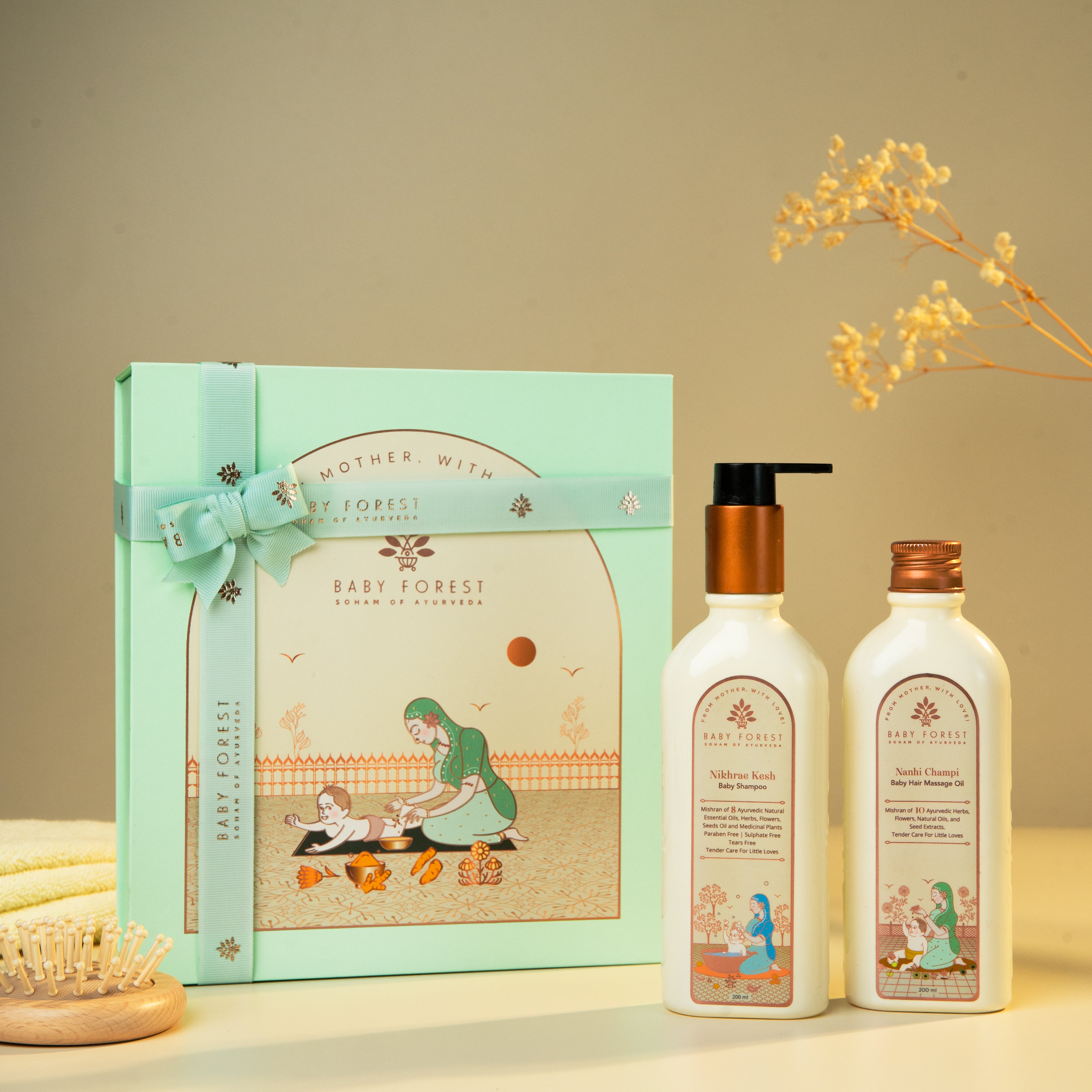
Saffron for Baby Skin: A Star Ingredient


Rs. 6,035.00

Rs. 2,340.00

Rs. 2,090.00

Rs. 1,145.00

Rs. 5,499.00

Rs. 13,215.00

Rs. 13,215.00

Everything You Need to Know About the Naamkaran Ceremony

Annaprashan: The First Meal Of Your Baby

5 Baby Rituals That Every Parent Should Know

A Parent's Guide to Baby Ear Piercing: Here’s What You Ne...

Jatakarma: The Baby's First Ritual.

Baby Playtime Guide: What You Must Consider While Playing...

Early Signs of Postpartum Complications: What to Look Out...
The first things related to babies are always extraordinary and special. And in Hindu culture, the first haircut is primarily ceremonious. Commonly known as Mundan, the ritual is called choodakaran or chaul in some parts of India.
According to Ayurveda, the ritual of mundan is believed to help regulate the body's temperature and maintain cerebral balance, thus promoting better and healthier growth. The act of shaving the head is also thought to open the crown chakra, enhancing the body's energy flow, which is vital for mental and physical health. Additionally, Ayurveda suggests that this practice can remove impurities and past karma, potentially improving the child's well-being.
The Mundan ceremony is a special event/ritual for babies in some cultures, particularly among Hindus. It involves shaving off the baby's first hair, usually when they are around one to three years old. People believe this ceremony cleans the baby from their past life, protects them from evil, and blesses them with a good future. Family members, friends, and a priest usually gather to celebrate this occasion with prayers and blessings. The Mundan is both a religious ritual and a joyful family gathering, marking an important milestone in a baby's life.
Ideally, the ceremony should be performed from the first year till the third year of a baby. The time is correct because the child is not as delicate as a newborn. In exceptional cases, parents can do the mundan later as well. But, doing the mundan at an odd number of months and years is suggested. It can be done at 7, 9, or 11 months of age. Some families follow the auspicious time indicated by the priest.
The Mundan ceremony can be performed in various locations depending on family traditions and preferences. Commonly, it takes place in a religious setting such as a temple, which provides a sacred environment for the ritual. However, some families choose to hold the mundan ceremony for their baby boy or girl at their home for a more intimate setting, especially if they wish to include only close relatives and friends. In some cases, it may also be conducted at a pilgrimage site or a significant religious place, adding spiritual significance to the event.
Every ceremony in traditions has some deeply rooted significance. Some of them are scientific, and some of them are logical beliefs. Here are the benefits of Mundan:

Some parents choose to perform the Mundan Ceremony at the holy places of Ganga Ghats or temples. In contrast, some of them conduct the ceremony at home. These days mundan is also conducted at salons. Wherever it is, Mundan is one of the most important Sanskar out of sixteen Sanskaras in Hinduism. Every strand of hair is kept to be offered to the deities. In some traditions, they are immersed in the holy river Ganga.

